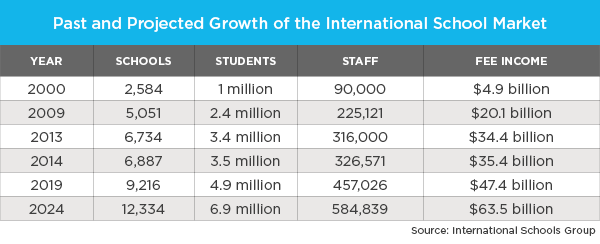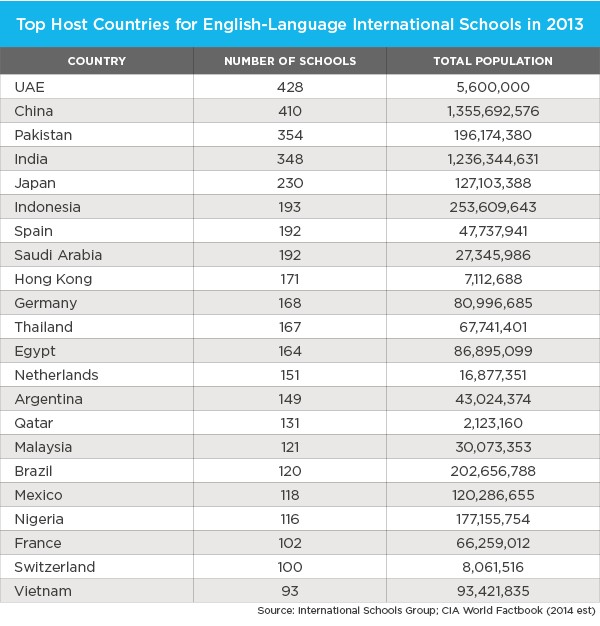In the last few years, international education in China has been an exceptionally fast growing sector. According to the latest numbers from International School Consultancy (ISC) Group, China is currently in the second place (after UAE) by the number of international schools in the country. Globally, international education is a rapidly growing market where demand far outstrips supply. Between 2009 and 2013, international school enrollment grew by 42% to 3.4 million while the number of schools increased by a third to 6,734.
International education in China: facts and trends
The main reasons behind increased demand for international education are internationalization of labor, the rapid growth of academic mobility at the higher education level, and the increasing dominance of English as the language of business.
International education in China has been mainly the market for the children of expatriate families. Government regulations have been holding back the development of this sector for locals which, potentially, could be practically unlimited. Therefore, 410 international schools in China have mostly been teaching foreign children or those from mixed marriages where one parent is a foreigner.
Dulwich College has been one the most well represented international schools in China with facilities in Beijing, Shanghai, Suzhou and Zhuhai. Presently, every single first tier city and larger number of second tier ones, have at least one American and one British school and their numbers keep growing.
Some of the most well-off Chinese parents go as far as obtaining for their offspring passports from African and Caribbean countries which are used for the sole purpose of qualifying them for international schools. This is why it is not uncommon to come across Chinese kids with Gambian or Senegalese passports enrolled in some of those prestigious educational institutions.
Moreover, international education in China is also one of the most expensive in the world with fees reaching $40,000 per year for high-end Shanghai and Beijing schools. Such price level is already comparable to tuition fees of top Western universities.
Trying to tap into this lucrative market, increasing number of private Chinese schools are now offering international curriculum for locals. Students in such schools can choose to opt out of traditional Chinese programs in favor of English based ones in order to boost their chances of enrolling in top Western universities.
There are also signs of authorities gradually easing their strict rules with regards to international education in China. One of them was a relatively recent relaxation in the regulations for Sino-foreign school partnerships. If the regulations are eased further, and given Chinese students’ demand for overseas universities, the market will most certainly grow further.
Considering Chinese parents insatiable drive to invest in the their children education combined with the means of large number of them to do so, international education in China is well on the way to become the largest market globally.






